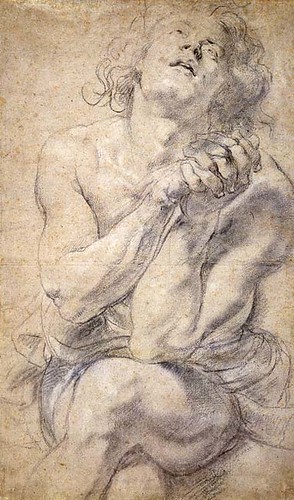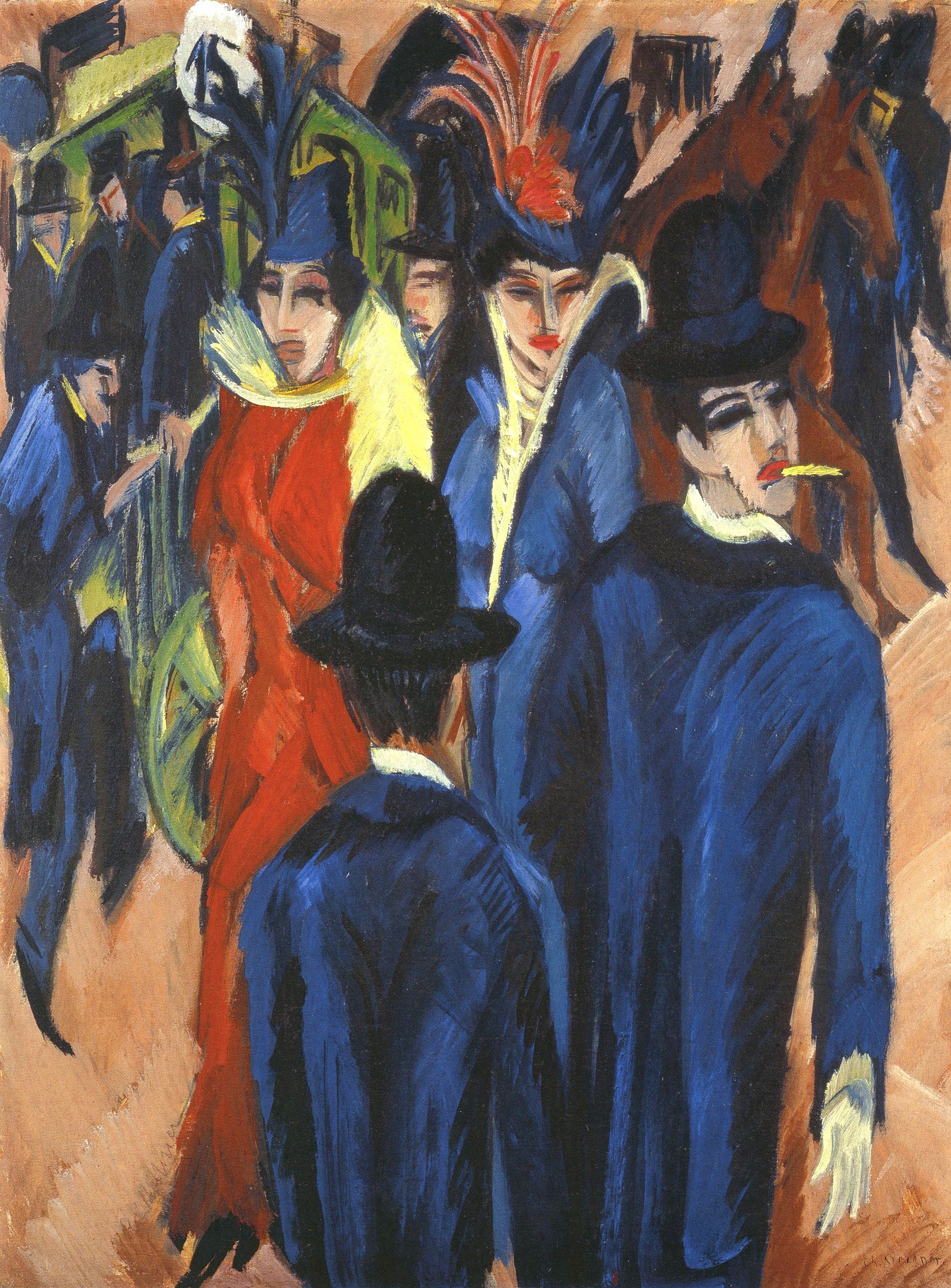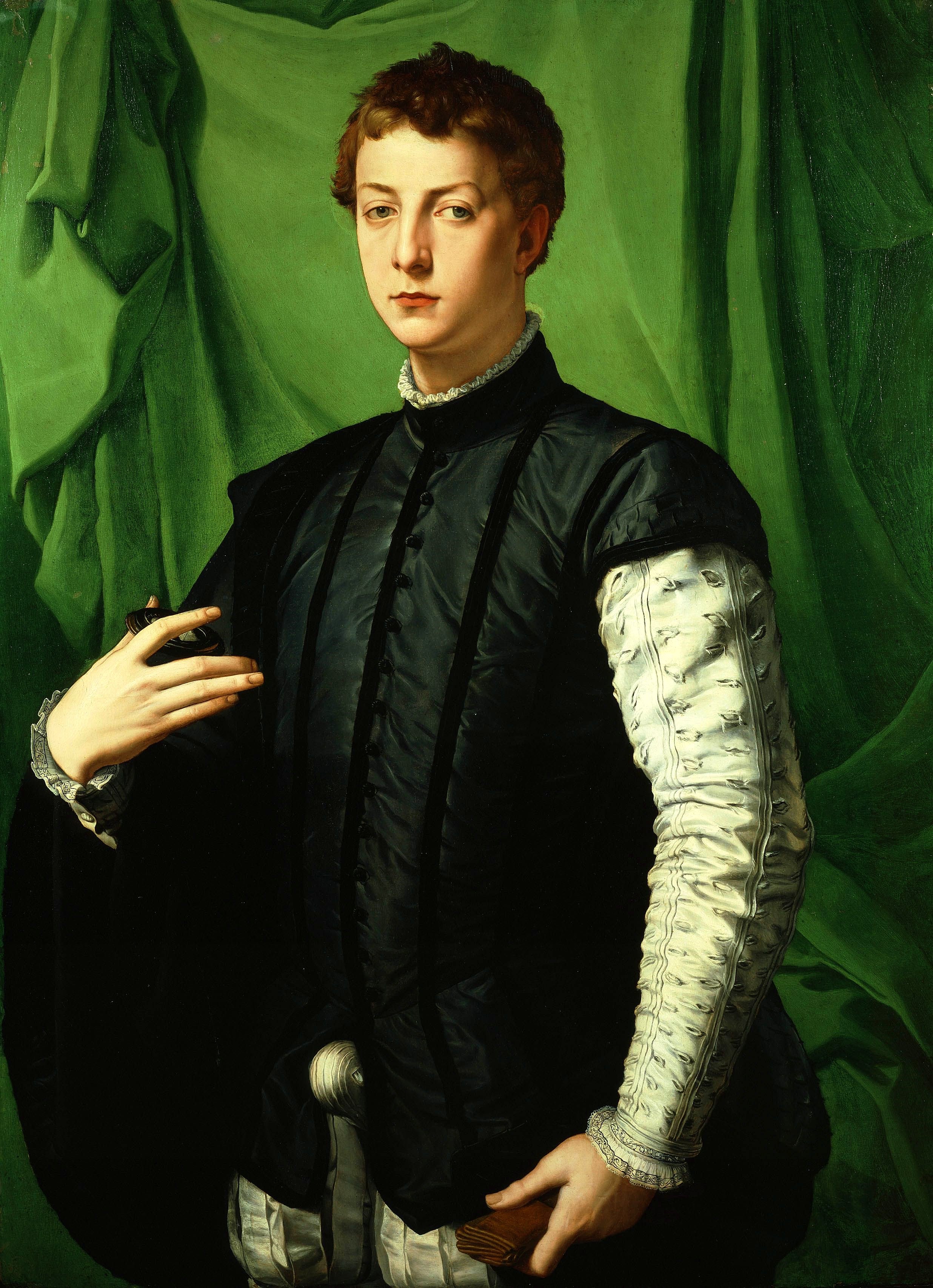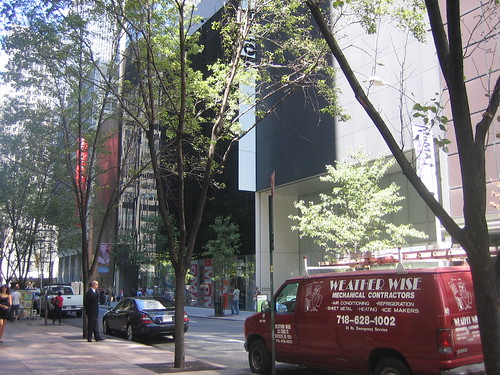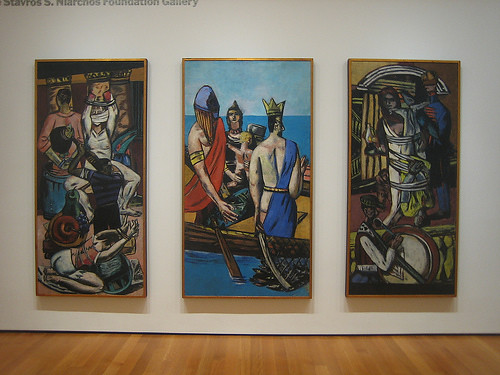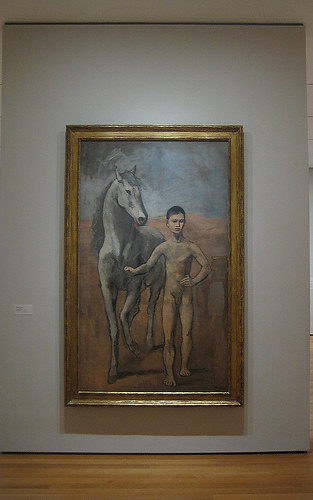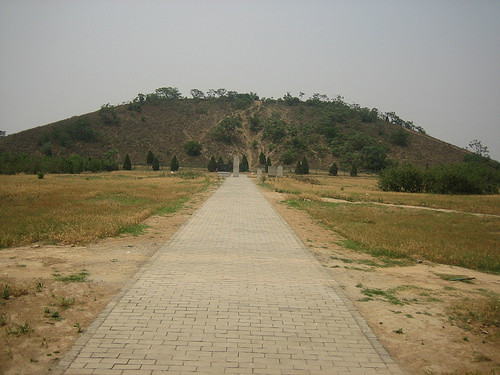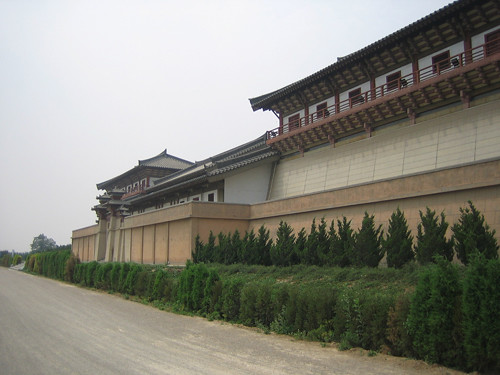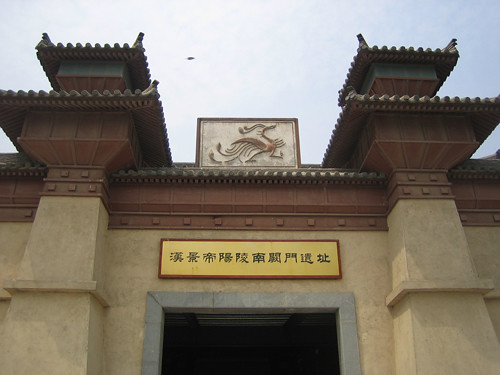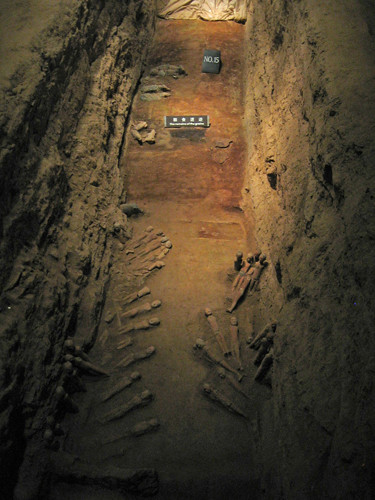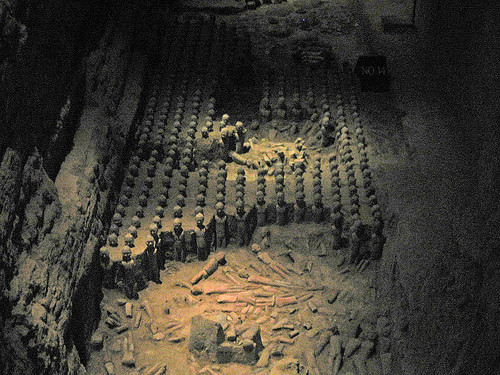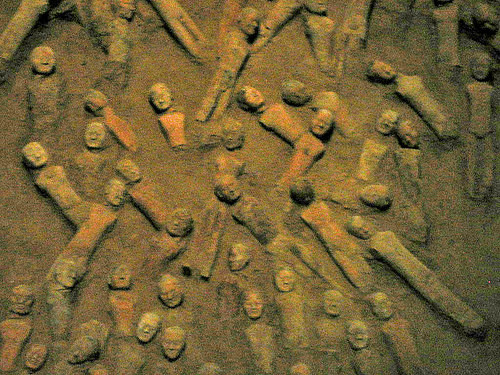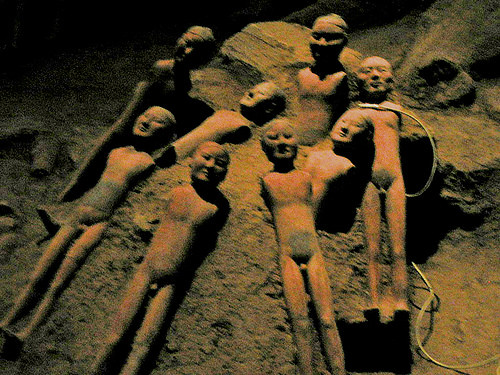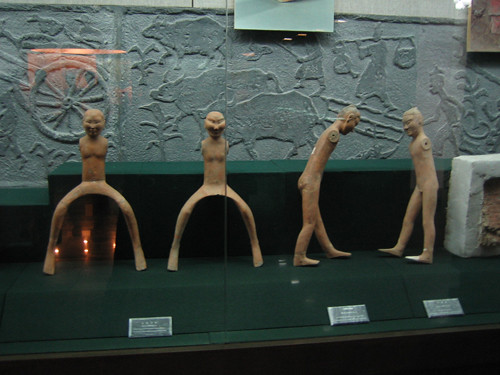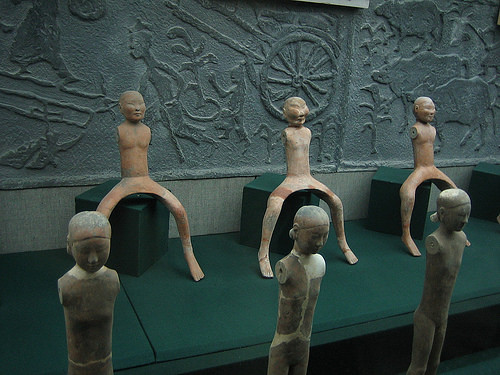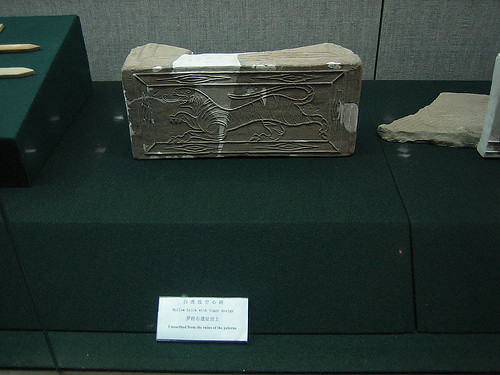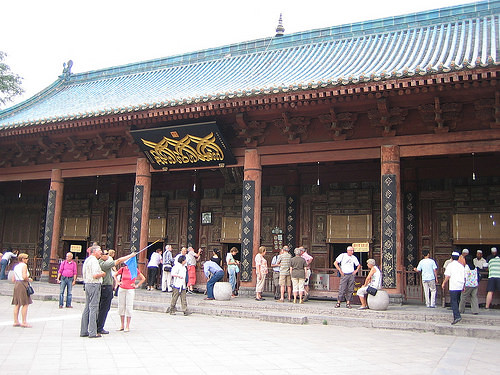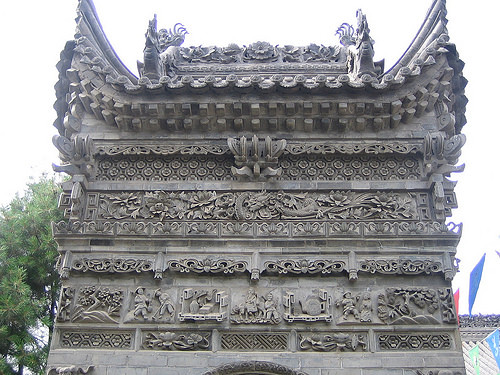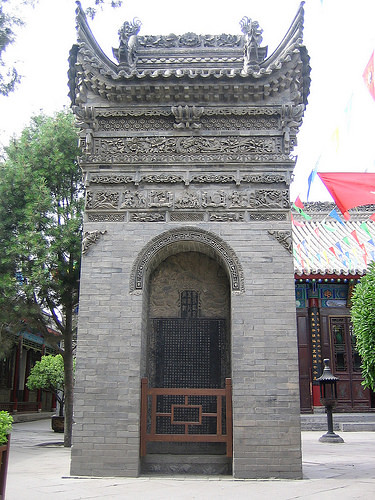My favorite was Saint Martin and the Beggar by El Greco, dating back to the beginning of the 17th century. The first impression of the painting was the freshness and cleanness — the rain-washed blue sky, the gleaming white pelt of the horse, the polished face, drape and armor of the well-groomed saint, and even the taut and well-scrubbed skin of the beggar — all these gave the painting an other-worldly purity, which was also heightened by the contrast to small muddy patches, such as the brown hill under their feet, and the shadowy distant hills and forest, seen only from underneath the stallion's belly. The viewpoint was very low, thus both figures, particularly that the mounted saint, hovered large almost like a super human, yet his humble and sweet face endeared him to the viewer and managed to bring him back towards viewers. The narrow vertical format of the painting, which was almost filled completely with these two persons and the horse, was also noteworthy and memorable.

El Greco [Public domain], via Wikimedia Commons
Saint Martin and the Beggar, 1597/1600, El Greco (Domenikos Theotokopoulos) (1541-1614)
The Art Institute was rightful to be proud of its Impressionism collections. One of the best of those was Arrival of the Normandy Train, Gare Saint-Lazare (1877) by French master Claude Monet. This painting, a bit unusual from others, was its industrial subjects and indoor setting. The steam permeated train station was awash in chilly blue light, and almost everything was off-focus due to the simmer of the heated air. Monet perfectly captured the chaos, excitement, and anxiety with the advent of modern technology and cold machinery.

Arrival of the Normandy Train, Gare Saint-Lazare
Claude Monet [Public domain], via Wikimedia Commons
My Favorite Museum Collection Series
>> My Favorite Museum Collection Series 144: My Favorite Paintings at Berkeley Art Museum / Pacific Film Archive
<< My Favorite Museum Collection Series 142: My Favorite Drawing and Artefact at Morgan Library & Museum in New York City
List of My Favorite Artworks in the Museums I've Visited
Other Related posts on Art · 文化 · Kunst:
- Crescat Graffiti, Vita Excolatur by Quinn Dombrowski
- My Favorite Paintings at Musée Marmottan Monet
- Museum of Modern Art (MOMA), New York City
- Max Beckmann's Paintings in MOMA and MET
- Gustav Klimt and Egon Schiele in Wien (Vienna)

